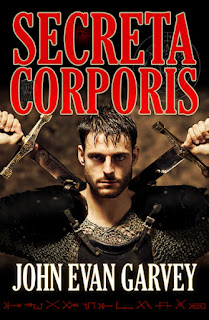Amos Lassen
To me a book that makes me think is a book worth reading and keeping. John Garvey’s book is a great example of that. It certainly made me think about the way I think and how I began to think a certain way. I think that is the result of being able to tie present and past together and by doing so in a unique manner—using an archaeological dig to do just that.
Marc is a graduate student and he really just wants to graduate. He does not appear to be overly ambitious and does not seem to want to succeed in his profession too quickly. He has been assigned to a dig in Jerusalem in the Talpiot area. If you know anything about Jerusalem, you know there are always digs going on and Talpiot is one of the major places for them. Many feel that Jesus spent his last few hours in Talpiot. Marc is near the supposed site of Jesus’ tomb and he is lackadaisical about any kind of find there. He doubts that they will find anything there. A year earlier a garbage pit from the 7th century bce was found there during the excavation of a well. Marc has been working around the well that dates back to the 12th century and all he has been able to find are pottery shards and bones of animals—just ordinary stuff. Suddenly he finds a human skeleton and when checked the bones date back to the 7th century bce and the diggers are faced with an interesting situation and want to know if the skeleton is the result of a murder.
Marc makes another find—clay tablets which also date back to the 7th century bce. On the tablets was something from the Torah written in an early form of Hebrew (so now I am truly hooked on the story since my field of study is Biblical Hebrew—not to be confused with the modern spoken language). I have seen many such finds and they have always been a major source of excitement. What the archaeologists have yet to figure out is if the tablets and the skeleton are at all related and if there was a murder. They have to ascertain if the location of the tables has anything to do with anything else or is the location coincidental. The tetragrammaton appears on the tablets and means that they should not have been so openly exposed and actually belong in a genizah (a special place in most synagogues where holy books that are worn are kept). The tablets that date back to the 7th century bce should not have been in a garbage pit and even more interesting, they were found next to a dead body.
It did not take long to learn that there is something in the tables that is very important and that there are those who are willing to kill to get them. It seems that there is a connection between the skeleton and the tablets and someone knows more than Marc and his colleagues.
This is the second of Garvey’s books with a setting having to do with the Biblical world and right away the two books spoke to me. I spent many years in Israel and was on the faculty of the Hebrew University in Jerusalem so quite naturally my interest was in the books. I understand that the book is based upon historical happenings. For me, reading this was almost like going home and Jerusalem is indeed a city that has both past and present visible in daily life. I remember being told that this Biblical person or that one stood where I was standing and maybe slept in that house over there. Combining history and mystery, Garvey gives us quite a read.
From Reviews by Amos Lassen

